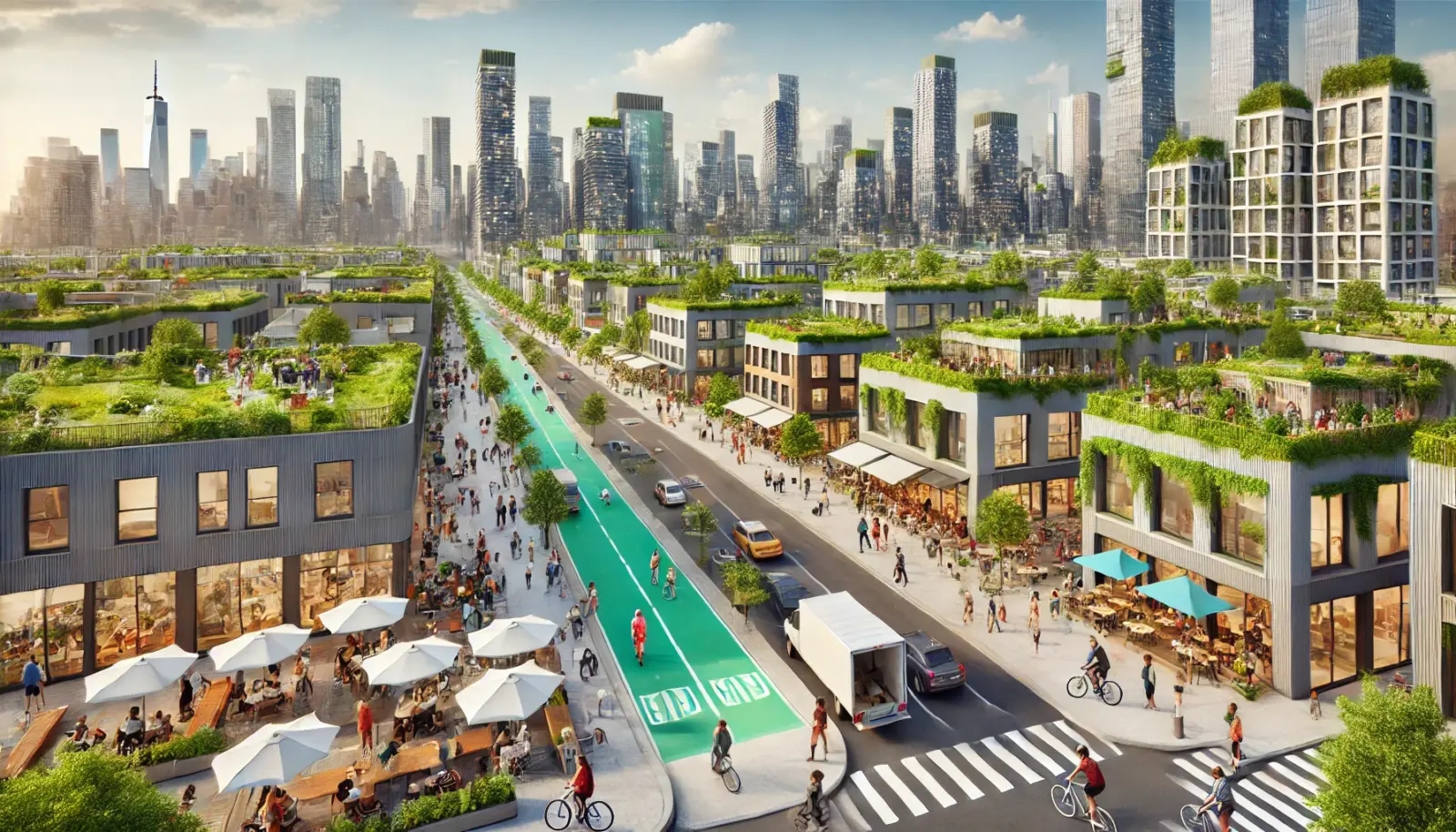Zoning laws may not always be top of mind for New Yorkers, but they play a crucial role in shaping the city we live in. From the size and design of buildings to how neighborhoods function, these rules impact everything around us. In December 2024, the city passed major updates to its zoning regulations—the largest since the 1960s—aimed at addressing key challenges like housing shortages, sustainability, and equitable development. These changes promise significant benefits for New York City residents, transforming our urban landscape for the better.

One of the most pressing issues in New York City is the housing crisis, with demand far outpacing supply. The new zoning changes increase allowable residential density in specific areas, enabling developers to build larger apartment buildings and create more housing units.
For citizens, this means greater access to housing, potentially easing the upward pressure on rents. Additionally, the expanded Inclusionary Housing program offers developers incentives to include affordable units in their projects across more geography in New York City. This change is a direct response to the need for more housing options that cater to diverse income levels, ensuring that NYC remains a city where people from all walks of life can thrive.
Sustainability is at the core of the new zoning updates. Real Estate developers are now required to incorporate greener practices into their designs, from energy-efficient systems to renewable energy sources like solar panels. Rooftop gardens and green spaces will become more common, contributing to better air quality and reducing the city’s heat island effect. For residents, these changes translate into healthier and more livable neighborhoods. Whether it’s enjoying the shade of a tree-lined street or the benefits of reduced utility bills in energy-efficient buildings, New Yorkers will feel the positive impact of these environmentally conscious updates.
Historically, some NYC neighborhoods have been overlooked when it comes to investment and development. The latest zoning changes aim to address this by streamlining approval processes in underserved areas and encouraging development in communities that have seen fewer resources. Citizens in these neighborhoods can look forward to revitalization, with improved infrastructure, new businesses, and modern housing options. By spreading development more evenly across the five boroughs, the city is working to create opportunities and elevate the quality of life for all New Yorkers.
The new zoning updates also focus on transit-oriented development, encouraging higher-density construction near subway and bus hubs. This approach benefits residents by improving access to public transportation and creating vibrant communities centered around convenience. Imagine living in a neighborhood where everything—from grocery stores to parks—is just a short walk or train ride away. This model not only reduces commuting times but also fosters stronger community ties and reduces reliance on cars, contributing to a more sustainable city.
The “City of Yes” initiative, a key component of the broader zoning reforms, aims to streamline and modernize zoning regulations to encourage more housing and economic development. One potential consequence of increased density, facilitated by initiatives like “City of Yes,” is a rise in property values. As more housing units become permissible in certain areas, the demand for land in those locations can increase, driving up prices. This effect is particularly pronounced in areas with good access to transit and other amenities.
While increased property values can be a boon for existing homeowners, it’s crucial to acknowledge the potential downsides. Rising property values can exacerbate affordability challenges, potentially displacing long-time residents and small businesses. The city must carefully balance the benefits of increased density with the need to protect vulnerable communities and preserve affordability. Strategies like inclusionary zoning, which requires developers to include affordable units in new projects, and targeted investments in affordable housing are essential to mitigate the potential negative impacts of rising property values. It’s a complex equation, and the city’s approach will need to be carefully monitored and adjusted as these changes unfold. For a deeper dive into how zoning changes, including those under “City of Yes,” can impact property values, resources like this article offer valuable insights.
These zoning changes are more than just technical adjustments—they represent a vision for a more inclusive, sustainable, and equitable New York City. By addressing challenges like housing shortages and environmental sustainability while focusing on neighborhood revitalization, these updates aim to make life better for every resident.
Whether it’s finding an affordable apartment, enjoying a cleaner and greener city, or benefiting from improved public transit, the advantages are clear. As these changes take effect, New Yorkers can look forward to a city that’s better equipped to meet the demands of the future while preserving the vibrant and diverse character that makes it unique.
Like us on Facebook for more stories like this: